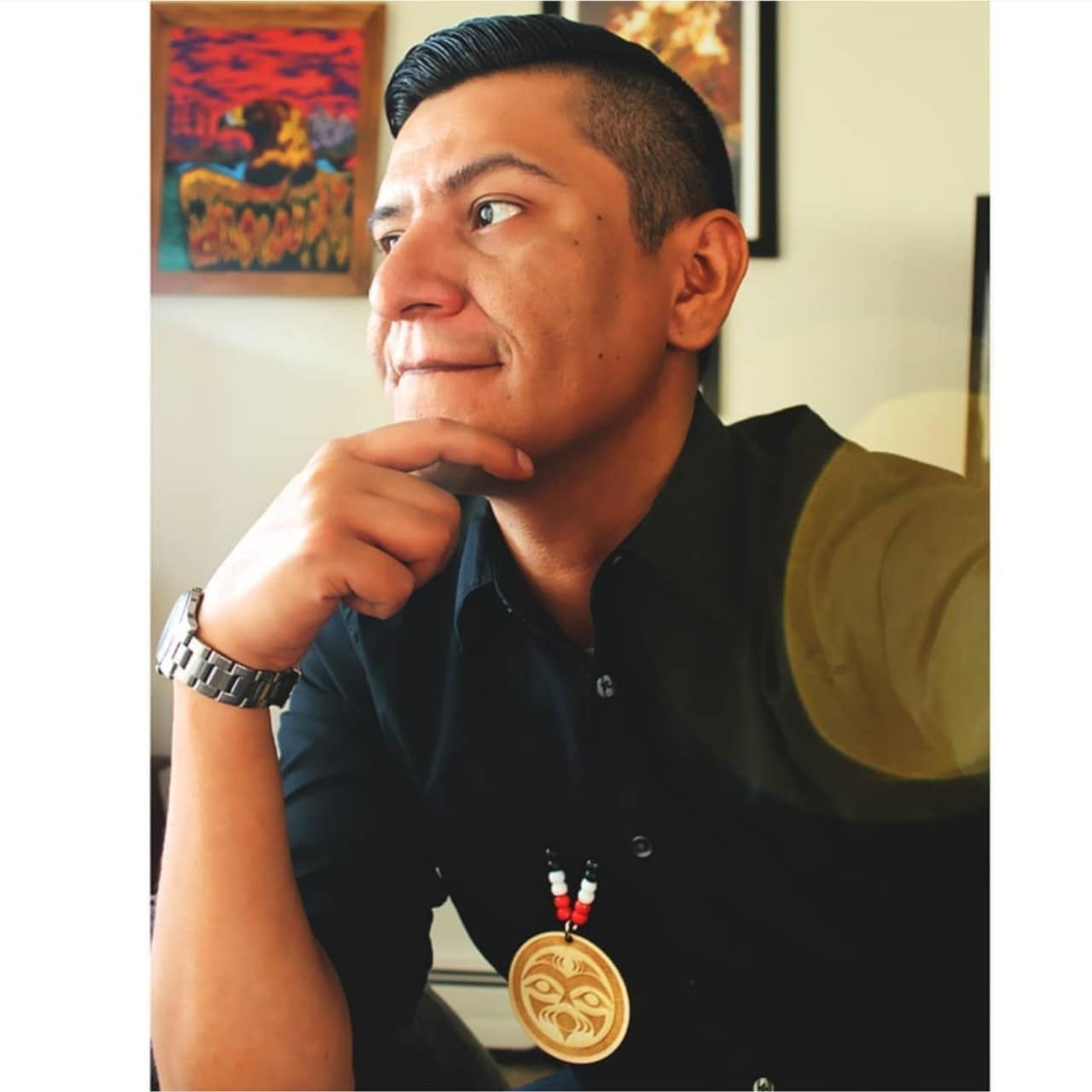The culture and spirituality of his Coast Salish people has always been a part of Ovila Mailhot’s life, but it wasn't until he became an artist that he found the perfect way to express that part of himself.
Originally from Seabird Island, B.C., the self-taught artist with roots in the Nlaka'pamux and Sto:lo Nation has built a burgeoning design career, creating logos and other artwork inspired by the traditions of his people for Indigenous and non-Indigenous businesses and for several apparel companies.
“I always wanted to represent where I’m from in my culture and my community,” Mailhot says. “Learning more about the ancestral elements of Coast Salish art history helps me find ways to show who I am and where I'm from.”
“When I first started, my goal as an artist was to make money and to be famous,” Mailhot joked, making clear that riches and fame seldom come to Canadian artists. “But over the years I find that I get much more fulfillment as an artist when I’m inspiring other people to express their creativity and tap into their own creative energy.”What he has also discovered along the way is that things he used to think were important weren’t always what gave him the most satisfaction.
Mailhot found some of that fulfillment when he started working with Connected North, a program run by TakingITGlobal, a non-profit organization. Connected North provides immersive and interactive education services to schools in remote communities across Canada, many of them Indigenous. Through virtual classroom learning, students engage directly with artists, scientists, experts and leaders.
Mailhot is one of Connected North’s most active content providers, having conducted over 200 sessions to share his art and design skills as well as traditions with classrooms across the country.
“It feels important for these students to connect with other Indigenous role models and artists to inspire that creativity, to be proud of who they are and their culture, history and where they're from,” he says. “My sessions aren't necessarily about Coast Salish art, but rather finding different ways to express that creativity and to express who they really are.
“I wanted to create content that is relevant to their own unique cultures. I think that inspires them to look at their own background and ask their parents questions about their history.”
The idea for Connected North grew out of a speech that Willa Black, VP of Corporate Affairs at Cisco Canada heard Governor General Mary Simon, who was then the head of Inuit Tapiriit Kanatami, give about the lack of access to services for students in Nunavut. Black was inspired to explore how Cisco’s video technology might help students connect in a live, interactive way to role models and experts who could help bring curriculum and students’ interests to life. Early program research indicated that the students at the school were more likely to go to school and be engaged and interested on “video days.” The success of the pilot inspired Cisco to expand it, and in 2015 the company reached out to TakingITGlobal, a charity specializing in education, technology and youth engagement, to take over program operations.
Since then, Connected North has expanded from five to 110 schools in five provinces and all three territories. Last year it conducted some 4,000 sessions in subjects ranging from performing arts, photojournalism, mental health and well being, to science, technology and math, to social studies and culture, and everything in between, some 250 options in all.
“For us this experience is about how can we help build more capacity among community leaders, among Indigenous educators and experts, because this program really should be responding to community needs,” says Michael Furdyk, Co-founder & Director of Innovation, TakingITGlobal.
“It's a bottom-up approach, where educators and students tell us what they need and we act as a concierge and matchmaker to find the right guest speaker and content to make it happen.”



Photo: Ovila Mailhot, graphic artist and designer, and his works Kingfisher and Whale Diving.
“Healing from that is not something that our program alone is going to address,” Furdyk says. “But I think just by beginning to identify people who were able to succeed even under those circumstances and spotlighting them and allowing them to share their stories, students realize that the future pathways aren't just what they see in their community.”
The Connected North team focuses on Indigenous content, highlighting First Nations, Métis and Inuit role models and experts so that students see themselves represented positively in their learning. Understanding the context the program is operating in, where many students have been directly impacted by the continuing intergenerational trauma caused by the residential school system, helped drive that approach.
Scotiabank recently made a commitment of $750,000 to Connected North to support the development of its digital platform to enable program growth and sustainability, helping community partners and educators easily access customized learning opportunities aligned to curriculum needs and student interests. The donation will also fund several dozen digital inclusion grants for Connected North students who are graduating high school and require a personal device such as a laptop to continue their education or training.
“Our new digital platform aims to increase accessibility of program content among educators in booking customized learning experiences, with a shared goal of strengthening student well-being,” Furdyk said.
Scotiabank's commitment to Connected North is a signature program of ScotiaRISE, the Bank's 10-year, $500-million initiative that aims to promote economic resilience among disadvantaged groups. Through ScotiaRISE, Scotiabank partners with programs and organizations across its footprint that provide the tools people need to improve their education and employment prospects, adapt to changing circumstances, and increase the likelihood of financial success.
"Access to new learning opportunities in rural and remote communities is a challenge without the right technology tools in place" says Michael Zerbs, Group Head, Technology & Operations at Scotiabank. "By partnering with Connected North, we are helping to provide access to the IT services required to create more dynamic learning experiences."

